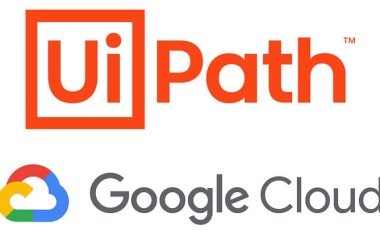IBM has unveiled IBM Z, capable of running more than 12 billion encrypted transactions per day. The new system also introduces a breakthrough encryption engine that, for the first time, makes it possible to pervasively encrypt data associated with any application, cloud service or database all the time.
IBM Z’s new data encryption capabilities are designed to address the global epidemic of data breaches, a major factor in the $8 trillion cybercrime impact on the global economy by 2022.
In the most significant re-positioning of mainframe technology in more than a decade, when the platform embraced Linux and open source software, IBM Z now expands the protective cryptographic umbrella of the world’s most advanced encryption technology and key protection. The system’s advanced cryptographic capability now extends across any data, networks, external devices or entire applications – such as the IBM Cloud Blockchain service – with no application changes and no impact on business service level agreements.
“The vast majority of stolen or leaked data today is in the open and easy to use because encryption has been very difficult and expensive to do at scale,” said Ross Mauri, General Manager, IBM Z. “We created a data protection engine for the cloud era to have a significant and immediate impact on global data security.”
IBM Z pervasive encryption delivers breakthroughs including:
- Pervasive encryption of data – all the time. IBM Z makes it possible for organisations to pervasively encrypt data associated with an entire application, cloud service or database in flight or at rest with one click. The standard practice today is to encrypt small chunks of data at a time, and invest significant labor to select and manage individual fields. This bulk encryption at cloud scale is made possible by a massive 7x increase in cryptographic performance over the previous generation z13 – driven by a 4x increase in silicon dedicated to cryptographic algorithms. This is 18x faster than compared x86 systems (that today only focus on limited slices of data) and at just five percent of the cost of compared x86-based solutions .
- Tamper-responding encryption keys. A top concern for organisations is protection of encryption keys. In large organisations, hackers often target encryption keys, which are routinely exposed in memory as they are used. IBM Z can protect millions of keys (as well as the process of accessing, generating and recycling them) in “tamper responding” hardware that causes keys to be invalidated at any sign of intrusion and can then be restored in safety. The IBM Z key management system is designed to meet Federal Information Processing Standards (FIPS) Level 4 standards, where the norm for high security in the industry is Level 2. This IBM Z capability can be extended beyond the mainframe to other devices, such as storage systems and servers in the cloud. In addition, IBM Secure Service Container protects against insider threats from contractors and privileged users, provides automatic encryption of data and code in-flight and at-rest, and tamper-resistance during installation and runtime.
- Encrypted APIs. IBM z/OS Connect technologies make it easy for cloud developers to discover and call any IBM Z application or data from a cloud service, or for IBM Z developers to call any cloud service. IBM Z now allows organisations to encrypt these APIs – the digital glue that links services, applications and systems – nearly 3x faster than alternatives based on compared x86 systems [3].
The IBM Z also helps clients build trust with consumers and comply with new standards such as the EU’s General Data Protection Regulation (GDPR) that will increase data protection requirements for organisations doing business in Europe starting next year. GDPR will require organisations to report data breaches to the regulatory authority within 72 hours and face fines of up to four percent of annual worldwide revenues or 20 million Euro, unless the organisation can demonstrate that data was encrypted and the keys were protected.





